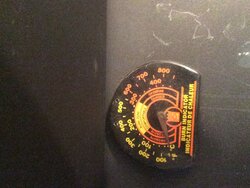i also did the dollar bill test. just to make sure...what i did was put the bill 1/2 and close the door. i then pull it out. if this is the correct procedure, here are my findings:
across the top, starting about 4" from the left corner, i am unable to pull the bill out all the way across
above and below the latch, i can freely pull it out.
near the hinges, it doesnt move.
at the left corners i can pull it out with some resistance
right top corner doesnt move bottom right with heavy resistance.
along the bottom there is mild resistance on the left, it gets harder to pull the bill out as i move towards the hinges
the brown discoration is across either side by the latch and hinges from center to bottom.
across the top, starting about 4" from the left corner, i am unable to pull the bill out all the way across
above and below the latch, i can freely pull it out.
near the hinges, it doesnt move.
at the left corners i can pull it out with some resistance
right top corner doesnt move bottom right with heavy resistance.
along the bottom there is mild resistance on the left, it gets harder to pull the bill out as i move towards the hinges
the brown discoration is across either side by the latch and hinges from center to bottom.


